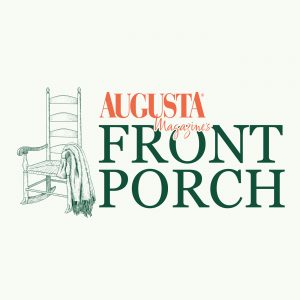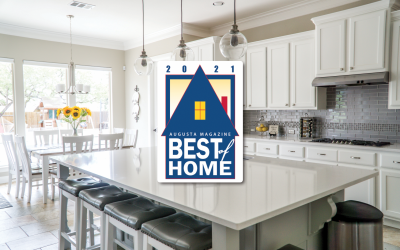“I DON’T WANT TO BREAK A NAIL” It was the second time she had said it. “I don’t want to break a nail”…a phobia that was going to keep her from having a garden. This fear, this “fear of gardening” has kept many human beings from enjoying the beauty of life in a garden. It is time to eradicate hortiphobia from America, along with its attendant fears—dirty knees, dirty hands, fresh air, the dreadful sound of birds singing, flowers blooming and, of course, broken nails.
Why is it that we so detest gardenwork? I believe that it is not so much “garden” work that we dislike as it is “yard” work. It may sound like a fine point, but it most certainly is not. Yard work is a thankless, endless, uninspiring obligation that has had many Americans opting for a minimum of green space around their homes. Well do I remember the pleasures of pine straw, with its diabolical orange strings, the charge to “pull weeds” in some pine island or some other task that had me wishing it was Monday again so I could be back at school. Sick, indeed.
The problem, as I see clearly now, is that the yard still looked like a yard when I was finished. Even worse, it still FELT like a yard. It still just felt like the space between our house and the street, or the space between our house and the neighbor’s house or the space between our house and the woods. Nothing more than a grassy space, interrupted occasionally by a “pine island” with maybe some liriope around its border. If I stood in the front yard I felt the same as if I had been standing in the street. The atmosphere, the mood, was just the same at the curb as it was at the front door. “Curb appeal,” in the perverse value system of those who propagate such ideas, had claimed another victim.
Curb appeal has resulted in homes that are made to be seen. I suppose this is done so that buyers of newly constructed homes can see their dream house clearly when viewing real estate listings. This is an understandable practice, but these contractor-scapes get grandfathered in. My own childhood neighborhood and, shamefully, my own childhood home are both museums of soul-less landscaping. Every box-leaved holly that was planted around every foundation is still there. It is a rule in “Curb Appeal Landscaping” that all shrubbery planting must be restricted to the foundation area. All homes will have a lawn from street to home and this lawn and its neatness (or lack of neatness) is to be the only difference between your yard and your neighbor’s.
It is this style of landscaping that has defined American suburbs. I suppose that we motorcar-bound citizens of the late 20th century are responsible for this lamentable state of affairs. Earlier generations treasured their outdoor spaces. It is quite evident, when visiting older sections of almost any community that people enjoyed spending time outdoors in the areas around their homes. Gardens and paths and fences and gates will be seen, bearing witness that people were actually supposed to “be” in these outdoor rooms. And therein lies the difference between a “yard” and a “garden.”
Gardens are for people. A garden is an outdoor space designed to nurture the soul of its visitor. We humans are much more than eyes and ears and noses, we are thoughts and memories and emotions. We can enjoy delight and tranquility, joy and fascination, admiration and wonder. There is more to stir our human soul in the outdoors than in any man-made building. This is the reason to build a garden. To make a place of respite and encouragement, hope and joy and humor is the work that we were given in Eden. It is still the atmosphere in which our souls thrive. υ
Okay, but you are not a gardener. You have a black thumb. You don’t have time. These “excuses” presuppose that a garden must be composed of notable plants, botanical treasures or, at least, plants that make demands of us. This is not true! A wonderful garden can be made using the same plants that may be found huddling around any suburban foundation planting, or even around the bank or around the local public school. It is all about arrangement.
Do interesting things with “boring” plants. That holly that is growing at the corner of your house can be used to denote the entrance to your garden, just place a pair at the beginning of your walkway and you have established a sense of entry and of “place.” Use a little imagination (and some pruners) and you can have characterful and theatrical sculptural forms that would make a Parisian proud. And while we are creating that sense of private space, a little evergreen presence closer to the thoroughfare will make us feel like we are no longer on public land. The ubiquitous ligustrum or holly or nandina or camellia will work just fine in that role, along with myriad common plants.
“I don’t want to break a nail.” It was the second time she had said it. “I don’t want to break a nail”…a phobia that was going to keep her from having a garden. This fear, this “fear of gardening” has kept many human beings from enjoying the beauty of life in a garden. It is time to eradicate hortiphobia from America, along with its attendant fears—dirty knees, dirty hands, fresh air, the dreadful sound of birds singing, flowers blooming and, of course, broken nails.
Why is it that we so detest gardenwork? I believe that it is not so much “garden” work that we dislike as it is “yard” work. It may sound like a fine point, but it most certainly is not. Yard work is a thankless, endless, uninspiring obligation that has had many Americans opting for a minimum of green space around their homes. Well do I remember the pleasures of pine straw, with its diabolical orange strings, the charge to “pull weeds” in some pine island or some other task that had me wishing it was Monday again so I could be back at school. Sick, indeed.
The problem, as I see clearly now, is that the yard still looked like a yard when I was finished. Even worse, it still FELT like a yard. It still just felt like the space between our house and the street, or the space between our house and the neighbor’s house or the space between our house and the woods. Nothing more than a grassy space, interrupted occasionally by a “pine island” with maybe some liriope around its border. If I stood in the front yard I felt the same as if I had been standing in the street. The atmosphere, the mood, was just the same at the curb as it was at the front door. “Curb appeal,” in the perverse value system of those who propagate such ideas, had claimed another victim.
Curb appeal has resulted in homes that are made to be seen. I suppose this is done so that buyers of newly constructed homes can see their dream house clearly when viewing real estate listings. This is an understandable practice, but these contractor-scapes get grandfathered in. My own childhood neighborhood and, shamefully, my own childhood home are both museums of soul-less landscaping. Every box-leaved holly that was planted around every foundation is still there. It is a rule in “Curb Appeal Landscaping” that all shrubbery planting must be restricted to the foundation area. All homes will have a lawn from street to home and this lawn and its neatness (or lack of neatness) is to be the only difference between your yard and your neighbor’s.
It is this style of landscaping that has defined American suburbs. I suppose that we motorcar-bound citizens of the late 20th century are responsible for this lamentable state of affairs. Earlier generations treasured their outdoor spaces. It is quite evident, when visiting older sections of almost any community that people enjoyed spending time outdoors in the areas around their homes. Gardens and paths and fences and gates will be seen, bearing witness that people were actually supposed to “be” in these outdoor rooms. And therein lies the difference between a “yard” and a “garden.”
Gardens are for people. A garden is an outdoor space designed to nurture the soul of its visitor. We humans are much more than eyes and ears and noses, we are thoughts and memories and emotions. We can enjoy delight and tranquility, joy and fascination, admiration and wonder. There is more to stir our human soul in the outdoors than in any man-made building. This is the reason to build a garden. To make a place of respite and encouragement, hope and joy and humor is the work that we were given in Eden. It is still the atmosphere in which our souls thrive. υ
Okay, but you are not a gardener. You have a black thumb. You don’t have time. These “excuses” presuppose that a garden must be composed of notable plants, botanical treasures or, at least, plants that make demands of us. This is not true! A wonderful garden can be made using the same plants that may be found huddling around any suburban foundation planting, or even around the bank or around the local public school. It is all about arrangement.
Do interesting things with “boring” plants. That holly that is growing at the corner of your house can be used to denote the entrance to your garden, just place a pair at the beginning of your walkway and you have established a sense of entry and of “place.” Use a little imagination (and some pruners) and you can have characterful and theatrical sculptural forms that would make a Parisian proud. And while we are creating that sense of private space, a little evergreen presence closer to the thoroughfare will make us feel like we are no longer on public land. The ubiquitous ligustrum or holly or nandina or camellia will work just fine in that role, along with myriad common plants.
Now that we have defined our space we need to address other elements of garden design…walkways, flowering plants, accessories, furniture and all the endless options for decorating your Eden. So many options, so many possibilities that only you can define perfection. You can draw on multitudinous sources of inspiration. And it will never be “perfect.” One accomplishment opens new possibilities and your mind conjures new “perfections.” It is not a diabolical moving target, but an energizing array of images of the next thing.
But a garden has flowers, doesn’t it? In most of our minds it does and there are multitudes of choices that are amenable to (mostly) hands-off gardening. Beginning in the very early spring we can have daffodils and crocus and leucojum and any of those perennial friends who appear every spring and who keep no record of wrongs. The flowering shrubs and vines of “high spring” are certainly not reluctant growers. Viburnum, deutzia, philadelphus and many other old-fashioned flowering shrubs are dependable and self reliant. Carolina Jessamine, wisteria, clematis, and even some “climbing” roses are equally dependable, if we need something to climb a bit. Through most the year we can be in the company of flowers borne by plants that don’t require our assistance at all.
It can be done so easily. Making a garden is done over years and only requires that we make a beginning. The process is self-energizing, as every modest improvement and every little success leads us on to others. And thus, you will become a gardener. No longer dreading tasks to be accomplished outdoors, you will learn to love the time spent in your peaceful place. No manicure can do THAT for your soul.
Now that we have defined our space we need to address other elements of garden design…walkways, flowering plants, accessories, furniture and all the endless options for decorating your Eden. So many options, so many possibilities that only you can define perfection. You can draw on multitudinous sources of inspiration. And it will never be “perfect.” One accomplishment opens new possibilities and your mind conjures new “perfections.” It is not a diabolical moving target, but an energizing array of images of the next thing.
But a garden has flowers, doesn’t it? In most of our minds it does and there are multitudes of choices that are amenable to (mostly) hands-off gardening. Beginning in the very early spring we can have daffodils and crocus and leucojum and any of those perennial friends who appear every spring and who keep no record of wrongs. The flowering shrubs and vines of “high spring” are certainly not reluctant growers. Viburnum, deutzia, philadelphus and many other old-fashioned flowering shrubs are dependable and self reliant. Carolina Jessamine, wisteria, clematis, and even some “climbing” roses are equally dependable, if we need something to climb a bit. Through most the year we can be in the company of flowers borne by plants that don’t require our assistance at all.
It can be done so easily. Making a garden is done over years and only requires that we make a beginning. The process is self-energizing, as every modest improvement and every little success leads us on to others. And thus, you will become a gardener. No longer dreading tasks to be accomplished outdoors, you will learn to love the time spent in your peaceful place. No manicure can do THAT for your soul.
This article appears in the May 2016 issue of Augusta Magazine.






